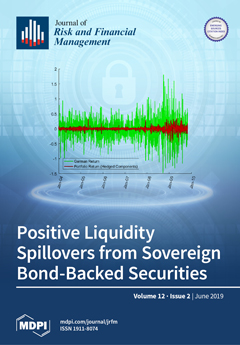This paper tests whether the traditional futures hedge ratio (h
T) and the carry cost rate futures hedge ratio (h
c) vary in accordance with the Sercu and Wu (2000) and Leistikow et al. (2019) “h
c” theory. It does
[...] Read more.
This paper tests whether the traditional futures hedge ratio (h
T) and the carry cost rate futures hedge ratio (h
c) vary in accordance with the Sercu and Wu (2000) and Leistikow et al. (2019) “h
c” theory. It does so, both within and across high and low spot asset carry cost rate (c) regimes. The high and low c regimes are specified by asset across time and across currency denominations. The findings are consistent with the theory. Within and across c regimes, h
T is inefficient and h
c is biased. Across c regimes, h
c’s Bias Adjustment Multiplier (BAM) does not vary significantly. Even though h
c’s bias-adjusted variant’s BAM is restricted to old data that is from a different c regime, the hedging performance of h
c and its bias-adjusted variant (=h
c × BAM), are superior to that for h
T. Variation in c may account for the h
T variation noted in the literature and variation in c should be incorporated into ex ante hedge ratios.
Full article




